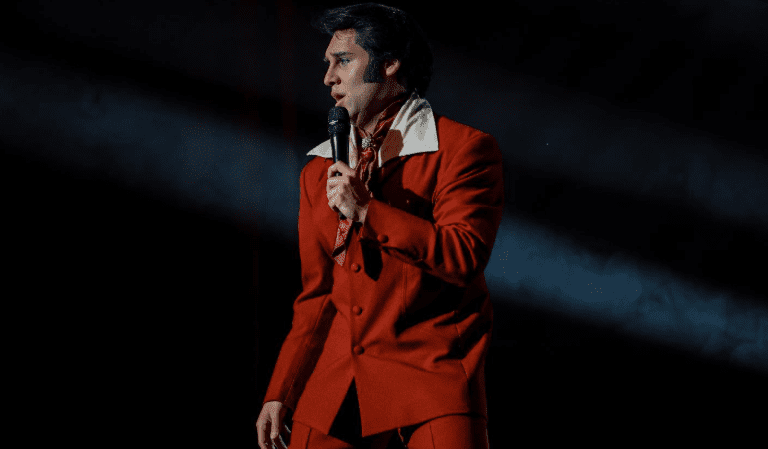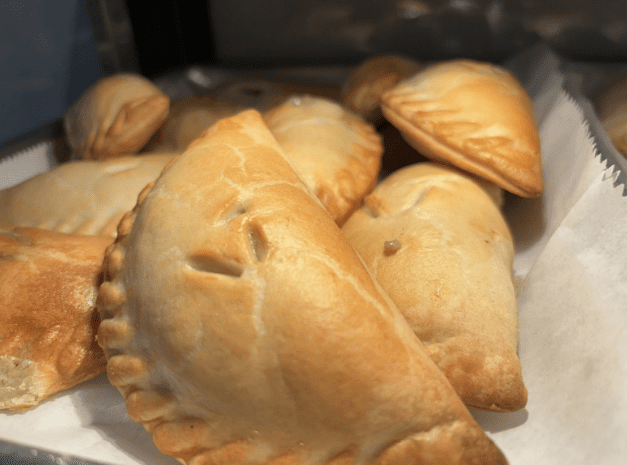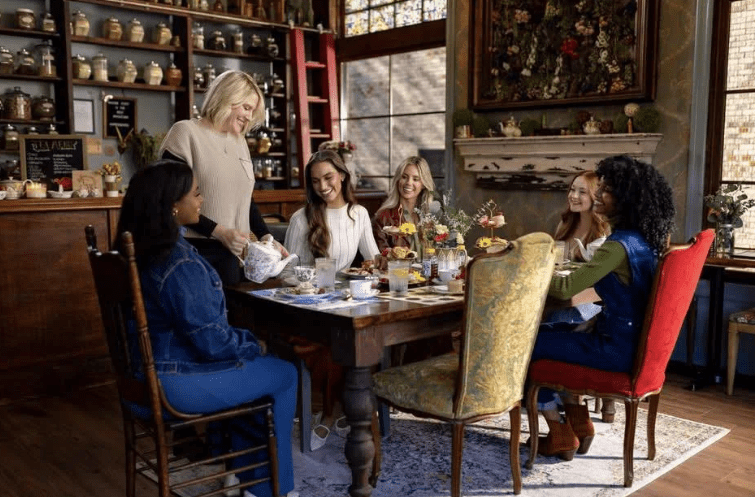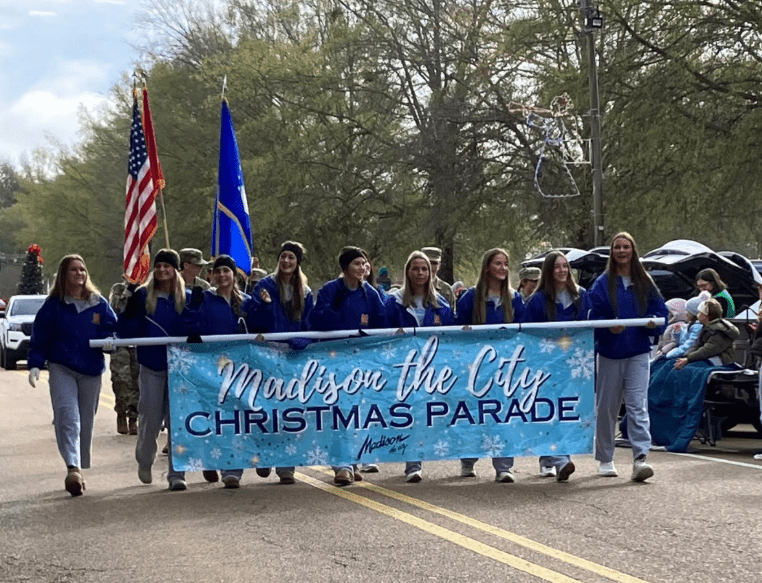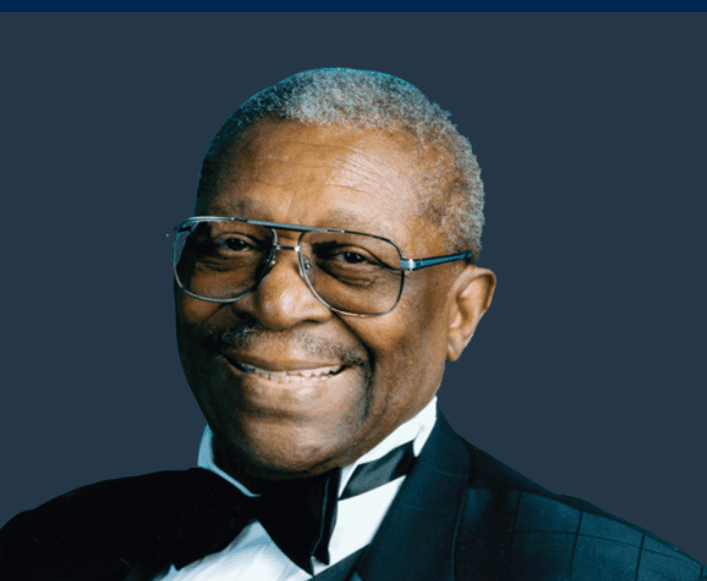
No matter where the “King of the Blues” traveled throughout his sixty-year music career, Indianola was always home. Experience the life of B.B. King by visiting the B.B. King Museum & Delta Interpretive Center.
It was a beautiful autumn Thursday mid-morning as I drove through the hills of Holmes County. Once I got past Lexington, it wasn’t long before the bluff gave way to the Mississippi Delta. Acres and acres of rich Delta farmland lay before me.
My destination for the afternoon was Indianola. Along the way, I observed farmers working in their fields, preparing for next year’s planting. In another area, humongous John Deere and Case tractors were pulling dirt wagons, preparing the area for a rice field—a stark contrast from the 1920s when there were smaller fields plowed with a mule. There is something about breaking the ground. What a beautiful sight!
Riley B. King thought so also. In the book Blues All Around Me (by B. B. King with David Ritz), he describes his years and experiences working in the Delta cotton fields, many of them from behind a mule—stinky, back-breaking work.
“Cotton turned me from a boy to a man, testing my energy and giving me what I needed—a means to survive. But I did more than cope with the crop. I actually love it. It was beautiful to live through the seasons, to break the ground in the chill of winter, plant the seeds against the winds of a spring, and pick the blossoms in the heart of summer (from the chapter, “King Cotton,” page 57).”
The Early Years of Riley B. King
Riley B. King, the son of Albert and Nora Ella King, was born on September 16, 1925, near a small town called Berclair, between Greenwood and Indianola, Mississippi. His first name was a combination of two people his father knew. The first was his deceased brother, and the other individual, Jim O’Reilly, a plantation owner he worked for. B.B. said his father dropped the “O” from O’Reilly because they weren’t Irish. Nothing was said about the two different spellings. But Riley it became.
The “B” didn’t stand for anything, just an initial, until he went to work for WDIA. His deejay nickname was “the Beale Street Blues Boy—three B’s.” When letters were sent to Riley at the radio station, they were addressed to “the Blues Boy.” Eventually, it was shortened to “Bee Bee,” then “B.B.” It stuck; only his closest friends called him “B.”
When B.B. was around four or five, Nora Ella and Albert separated. She returned to her family, who lived near Kilmichael, and went to work for the landowner. B.B. was responsible for milking the cows and doing other farm chores. He treasured the time with his mother, grandmother, and great-grandmother.
Nora Ella died at age twenty-five. Her mother took care of B.B. until her death several years later. Life became tougher. Eventually, his father came and took him back to Lexington to live with his new family. But B.B. didn’t like living with his father’s family, nor did he like Lexington. So in the fall of 1938, he returned to Kilmichael, making the journey on his bicycle.
Take a moment to listen to B.B. share about a meal that a kind lady gave to him on that long trip: A Moment with the King: Best Meal.
A Passion for Guitars
Around seven, B.B. and his mother attended the Church of God in Christ, where the Reverend Archie Fair preached. One Sunday, he saw B.B. admiring his guitar, a Silvertone from the Sears and Roebuck Catalog. He placed it in B.B.’s lap, showed him how to hold it and pluck the strings and how to strum using the one, four, and five chords.
B.B. tells the story of making a guitar in the short video, My Back Porch Guitar. When he was twelve, he purchased his first guitar from a man who lived in the Kilmichael area. It cost him a whopping $15.00 for a cherry-red Stella, an acoustic model. He played it all the time. He called it “a righteous pacifier and comforting companion.”
But it would be 1949 when a Gibson L-30 would take on the name Lucille. B.B. was in Twist, Arkansas, on a cold December night, playing in a chilly old house; some called it a nightclub. A garbage pail heated the building, half filled with kerosene. A fight broke out between two men, and soon, the garbage pail had been knocked over, and flames rapidly spread throughout the wood structure. There was only one door, and everyone rushed to it. Once B.B. got outside, he realized he had left his guitar. He went back inside and returned with the guitar. He sustained burns on his legs. Later, he overheard several patrons talking about how the fight started. It was over a woman who worked at the club. Her name was Lucille. That night, B.B. christened his guitar Lucille, a reminder to never be this foolish again.
While in New York, Lucille was stolen from B. B.’s vehicle. He always named every guitar he purchased Lucille. The name was inscribed on the headstock of the guitar. Together, they traveled to Brazil, Russia, China, Japan, and other locations. Her music sang along with Stevie Wonder, Etta James, and Jerry Lee Lewis, just to name a few of the great musicians. B.B. called the guitar “his best gal.”
B.B. King Museum & Delta Interpretive Center
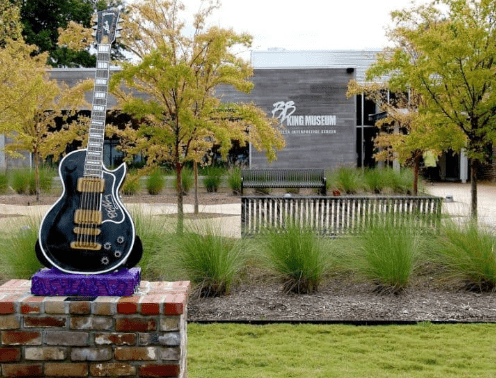
How does an individual begin to share the Blues career of “The King of the Blues?” I don’t think it is possible. There are too many life experiences and stories of the people he met. Individuals who invested in his music career and the bands he played with that led to this title. And let’s not forget all the people he met and influenced.
Therefore, I believe there are two ways to learn quickly. If you want a first-hand account, read B.B.’s book, Blues All Around Me, The Autobiography of B. B. King. He wrote the book at age seventy.
The other way is to experience the life of B.B. King, by visiting the B.B. King Museum & Delta Interpretive Center at 400 Second Street, Indianola, Mississippi.
I suggest you plan your entire day to be in Indianola. I started my day with lunch at The Crown restaurant and a wonderful visit with Evelyn Roughton, who knew B. B. King. She was involved with the initial planning for the museum. From there, I went directly to the museum and was greeted by a hostess who briefly explained the layout of the museum.
After years of planning and obtaining donors, the B. B. King Museum opened in 2008. It was designed and built around the only brick cotton gin left in Mississippi. B.B. worked in this gin as a young man. It now serves as a community event room.
You must begin at The Theatre. Make yourself comfortable and watch the movie presentation several times. It runs continuously.
Now it is time to enter the museum and spend time in the following galleries:
- The Delta, 1930s
- Memphis, 1950s
- Artist to Icon, 1960s
- The Final Decade
- The Memorial Courtyard
Within each gallery, there is a video presentation related to that era. Behind glass windows, there are exhibits that represent something about B.B.’s life during that era.
B.B. King donated his pictures, records, and awards. You will find his actual office items. Then in the very back of the museum you will find three vehicles: his custom-painted Chevy El Camino and Rolls Royce Silver Shadow, and a tour bus.
Don’t be in a hurry, take your time as you make your way through the 4,500-square-foot addition. There is much to learn about B.B.’s life.
Now it is time to step out and visit the Memorial Courtyard. Sit on the bench with the B.B. King Bronze sculpture. It was created by noted sculptor Antonio Tobias “Toby” Mendez. The John William McPherson Jr. family presented the sculpture to the museum. From this area, you can view or walk into the area where B.B. King is buried.
B.B. King passed away on May 14, 2015, at 89. The funeral service may be viewed at MPB-YouTube Video.
Five honorary doctorates were given to B.B. King during his lifetime. He received the Presidential Medal of the Arts from President George H. W. Bush in 1990, along with additional honorariums from others. His first Grammy award was in 1970 for Best Rhythm and Blues Vocal Performance, Male: “The Thrill is Gone.” His additional awards and accomplishments are too numerous to list for this article.
No matter where Riley B. King, “King of the Blues,” traveled throughout his sixty-year music career, Indianola was always home. Make plans to visit his favorite place soon.
B.B. King’s 10 Greatest Songs (from Rollingstone.com)
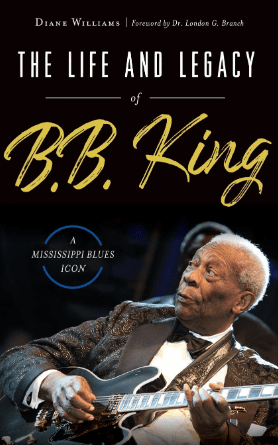
1. “Three O’Clock Blues” (1951)
2. “You Upset Me Baby” (1954)
3. “Every Day I Have the Blues” (1955)
4. “Sweet Sixteen” (1960)
5. “Don’t Answer the Door” (1966)
6. “Why I Sing the Blues” (1969)
7. “The Thrill is Gone” (1970)
8. “Chains and Things” (1970)
9. “To Know You is to Love You” (1973)
10. “Never Make a Move Too Soon” (1978)
Books About B. B. King
- The Life and Legacy of B.B. King: A Mississippi Blues Icon by Diane Williams, released November 25, 2019
- King of the Blues: The Rise and Reign of B.B. King by Daniel de Vise, released October 5, 2021
- B. B. King: From Indianola to Icon: A Personal Odyssey with the King of the Blues by Charles Sawyer, released August 30, 2022
